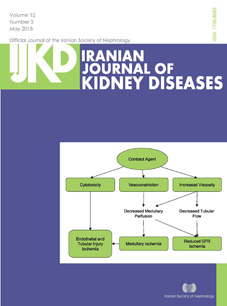Insulin Receptor Substrate 2 mRNA Expression in Urinary Sediment Cells as a Diagnostic Marker of Nephropathy in Diabetic Patients
Abstract
Introduction. The initiation and progression of diabetic nephropathy (DN) is complex. Quantification of mRNA expression in urinary sediment cells (USCs) has emerged as a novel strategy for studying kidney diseases. Insulin requires a family of insulin receptor substrate (IRS) proteins for its physiological effects, and many reports have highlighted the role of insulin and IRS proteins in kidney physiology and disease. This study aimed to assess IRS2 expression in USCs of patients with diabetes mellitus, DN, and nondiabetic chronic kidney disease.
Materials and Methods. To quantify IRS2 expression, RNA was extracted from USCs of 223 individuals comprised of diabetes mellitus, DN, and nondiabetic chronic kidney disease as well as a healthy control group. The cDNA was synthesized and comparative TaqMan real-time reverse transcript polymerase chain reaction was used in the presence of beta actin gene as a reference gene for normalization, relative to the control.
Results. Our data showed that the USCs expression of IRS2 gene was significantly increased in the DN patients compared with other groups (P < .001). The IRS2 expression was not significantly different between microalbuminuria and macroalbuminuria conditions or different stages of DN, except for the end-stage renal disease where the expression was lower.
Conclusions. In patients with DN, urinary mRNA expression of the IRS2 gene is associated with kidney function. Our result suggests that serial measurement of urinary expression of this gene may have a value for early detection of kidney injury in diabetic patients.


